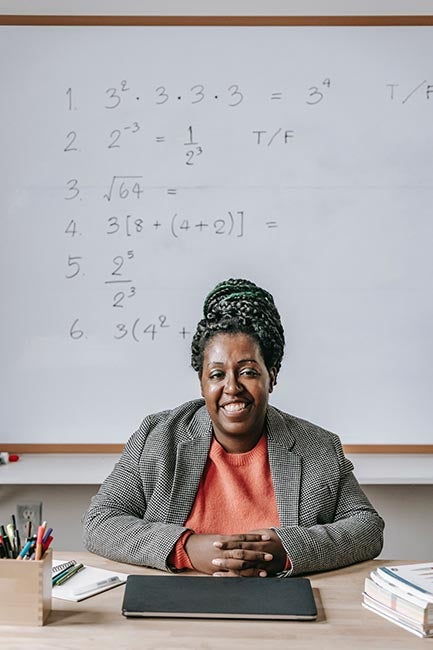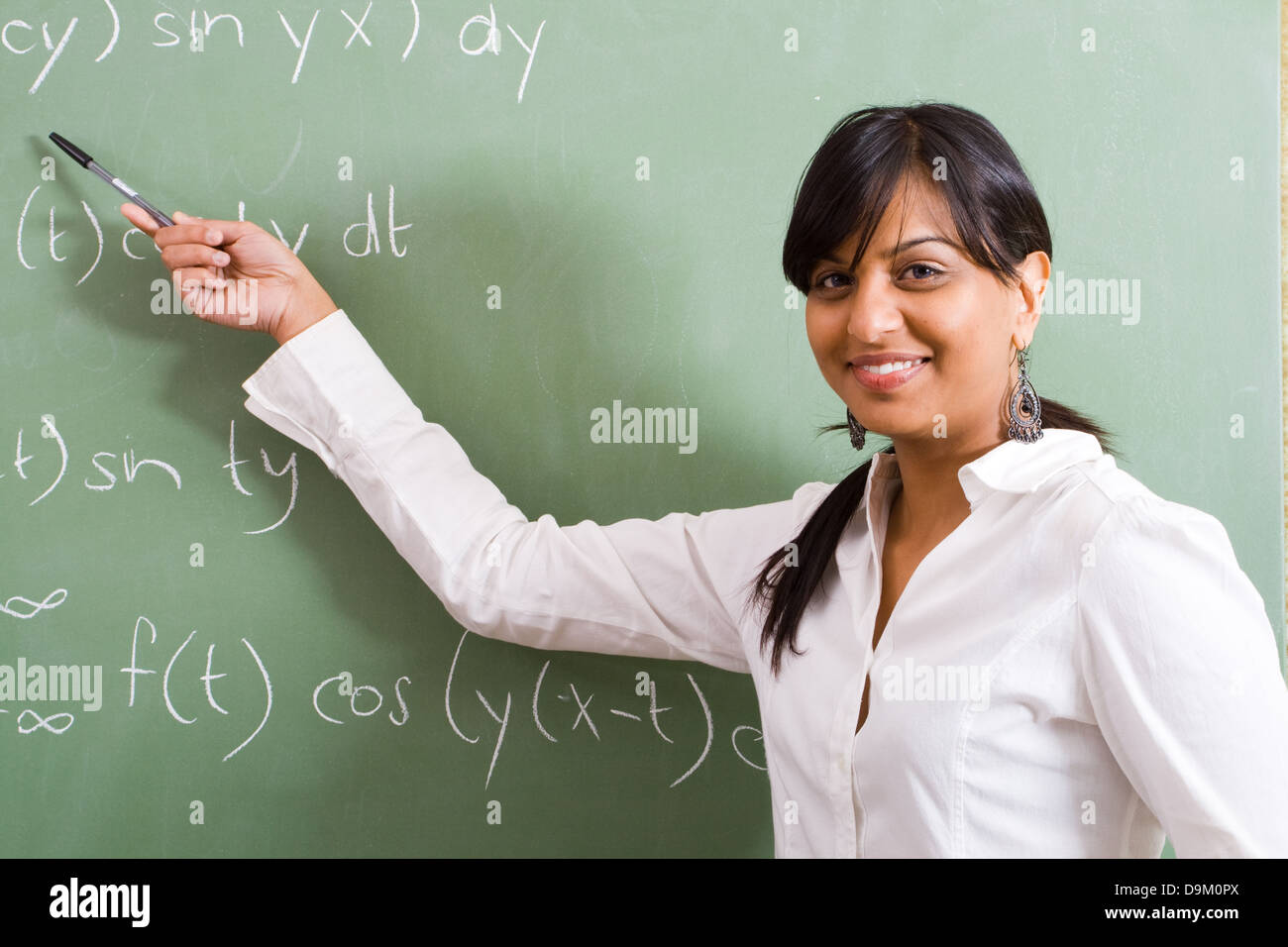Why mentorship from experienced math teachers makes a difference
Wiki Article
Attaining Venture Quality: Understanding Industry Standards and Strategic Leadership for Mathematics Faculty
Attaining venture quality in maths education and learning demands a cautious assessment of market standards and the function of calculated leadership. Mathematics faculty need to comprehend exactly how these standards shape curriculum and teaching methods. Furthermore, effective management can drive cooperation and professional growth among teachers. This multifaceted method increases concerns about the practical ramifications for trainees' career readiness. What approaches can professors embrace to connect the gap in between education and industry needs?The Importance of Industry Standards in Mathematics Education And Learning
In the domain name of mathematics education and learning, sticking to market criteria is vital for guaranteeing that programs properly prepare trainees for real-world applications. Sector standards offer a framework that lines up academic results with the skills needed in numerous occupations. By incorporating these criteria, math programs can enhance their importance and roughness, thus enhancing student engagement and finding out end results.
Strategic Leadership: Defining Responsibilities and duties
Effective critical leadership within maths faculty calls for a clear interpretation of roles and obligations to guarantee suitable operating and alignment with institutional goals. Leadership structures have to be established to delineate tasks among professor, administrators, and support staff, ensuring that each specific recognizes their payments toward collective purposes. Faculty leaders ought to grow an environment that advertises partnership and liability, enabling staff member to involve properly in educational program advancement and assessment procedures.Tactical leaders should prioritize ongoing specialist development, guaranteeing that faculty participants are fully equipped to meet the advancing needs of maths education and learning. This involves not just lining up individual duties with institutional priorities however additionally fostering a society of constant enhancement and advancement. By clearly defining duties, strategic leadership can improve interaction, simplify decision-making procedures, and ultimately add to an extra natural and reliable mathematics professors, positioned to meet the obstacles of contemporary education and learning.
Best Practices for Enhancing Teaching and Knowing
In the search of improving training and learning, mathematics faculty can benefit from cutting-edge mentor techniques that engage students effectively. Carrying out collective understanding settings fosters teamwork and critical reasoning abilities among students. These ideal practices are essential for developing a vibrant instructional experience that promotes deeper understanding of mathematical ideas.Ingenious Mentor Techniques
While conventional approaches of training have their location, innovative training techniques are essential for enhancing interaction and understanding among maths faculty and their trainees. Methods such as turned class and problem-based learning urge active participation, permitting pupils to take ownership of their knowing. Integrating modern technology, such as interactive simulations and on-line partnership devices, additionally sustains diverse learning designs and cultivates vital thinking. Furthermore, using real-world applications in lessons helps trainees attach mathematical ideas to day-to-day life, making the subject extra enticing and appropriate. Professor that welcome these methods can develop a vibrant learning environment that not just improves understanding but additionally motivates a long-lasting passion for mathematics. Embracing ingenious techniques inevitably results in higher degrees of student accomplishment.
Collaborative Knowing Environments
Structure on the ingenious training strategies previously talked about, collective learning environments play a pivotal duty in improving the instructional experience for mathematics faculty and their pupils. These settings motivate active interaction and foster a feeling of neighborhood, allowing trainees to learn from each other and establish essential thinking skills. Best practices consist of structured team job, peer tutoring, and project-based knowing, which promote cooperation and shared duty for discovering end results. Professors ought to assist in discussions and provide support while allowing trainees to explore principles collectively. In addition, incorporating technology can boost partnership by providing platforms for interaction and source sharing. Inevitably, collaborative learning environments encourage students to take possession of their education and learning and grow a much deeper understanding of mathematical ideas with synergy and communication.
Lining Up Faculty Goals With Institutional Purposes
Straightening faculty objectives with institutional purposes is important for fostering a natural academic environment that improves both training effectiveness and pupil success. When professors participants recognize and welcome the more comprehensive mission of their organization, their mentor approaches can be customized to sustain these goals. This alignment assures that professors are not just satisfying departmental assumptions yet additionally contributing to the overarching objectives of the organization, such as improving trainee interaction and academic efficiency.To achieve this positioning, normal interaction in between professors and administration is imperative. Workshops and collaborative meetings can help with discussions on institutional priorities and just how professors can incorporate these into their educational program. Additionally, performance analyses can be made to show these lined up goals, urging faculty to introduce in their mentor approaches. Inevitably, when faculty goals reverberate with institutional aims, they cultivate a much more unified method to education, profiting both students and educators alike.
Cultivating a Culture of Constant Renovation
Promoting a culture of continual enhancement within maths professors is important for improving both training top quality and student results. This includes developing an atmosphere where professor are encouraged to frequently analyze their mentor techniques and look for feedback. Expert growth possibilities need to be offered, allowing teachers to explore brand-new instructional strategies and incorporate evidence-based methods into their curriculum.Partnership amongst professors is important; sharing experiences site web and understandings can lead to innovative options and improved mentor methods. Institutions must implement organized assessment processes, making it possible for professors to show on their performance and recognize locations for development.
Identifying and commemorating accomplishments, no issue just how tiny, reinforces the commitment to improvement. By embedding continual enhancement right into the professors culture, mathematics departments can boost their total effectiveness, ultimately benefiting both instructors and pupils in the pursuit of scholastic quality.
Innovative Techniques to Mathematics Program Development
Numerous innovative strategies can change mathematics program development, making it much more responsive to Click Here the advancing academic landscape. experienced math teachers. One effective strategy includes incorporating technology, such as on-line understanding systems and interactive software application, to improve student interaction and ease of access. This change enables for a blended understanding setting, providing to varied knowing designsEmbracing a project-based understanding framework motivates joint problem-solving and real-world application of mathematical ideas. Faculty can also highlight interdisciplinary connections, illustrating exactly how mathematics converges with areas like engineering, art, and scientific research, cultivating a much more all natural academic experience.
Normal feedback from students and industry stakeholders can assist educational program modifications, making certain relevance and roughness. Additionally, using expert advancement opportunities for faculty can advertise innovative training techniques and keep educators educated of the most recent fads. Via these strategies, math programs can grow a vibrant learning atmosphere that prepares pupils for future challenges and professions.
Often Asked Questions
Just How Can Professors Determine the Influence of Market Standards on Pupil Outcomes?
Faculty can gauge the effect of market criteria on pupil end results by examining evaluation outcomes, tracking employment look at these guys prices, obtaining employer feedback, and carrying out longitudinal studies to compare pupil performance prior to and after implementing the requirements.What Resources Are Readily Available for Specialist Advancement in Mathematics Education?
Countless resources for professional growth in maths education and learning include online courses, workshops, webinars, professional companies, conferences, and peer cooperation possibilities. These platforms promote skill improvement, ingenious training methods, and effective integration of modern technology into maths guideline.How Do Market Standards Vary Across Various Geographical Regions?
Market standards differ considerably across geographical regions due to aspects like governmental laws, instructional top priorities, and cultural influences. These inconsistencies can influence curriculum advancement, teaching methodologies, and the application of analysis methods in maths education and learning.What Function Does Technology Play in Getting Enterprise Quality in Mathematics?
Modern technology enhances business quality in maths by enhancing procedures, making it possible for data analysis, promoting cooperation, and providing accessibility to resources. It equips trainees and educators alike, advertising cutting-edge mentor approaches and improving overall instructional results in the area.How Can Professors Effectively Collaborate With Industry Partners?

In the search of improving teaching and discovering, math faculty can profit from ingenious training strategies that engage trainees effectively. While standard approaches of teaching have their area, innovative teaching methods are necessary for enhancing engagement and understanding amongst maths faculty and their trainees. Structure on the ingenious teaching methods previously discussed, collective learning atmospheres play an essential function in enhancing the instructional experience for maths faculty and their trainees. Straightening faculty objectives with institutional purposes is essential for fostering a natural instructional setting that enhances both mentor performance and trainee success. Promoting a society of constant renovation within mathematics faculty is important for enhancing both training quality and student end results.
Report this wiki page